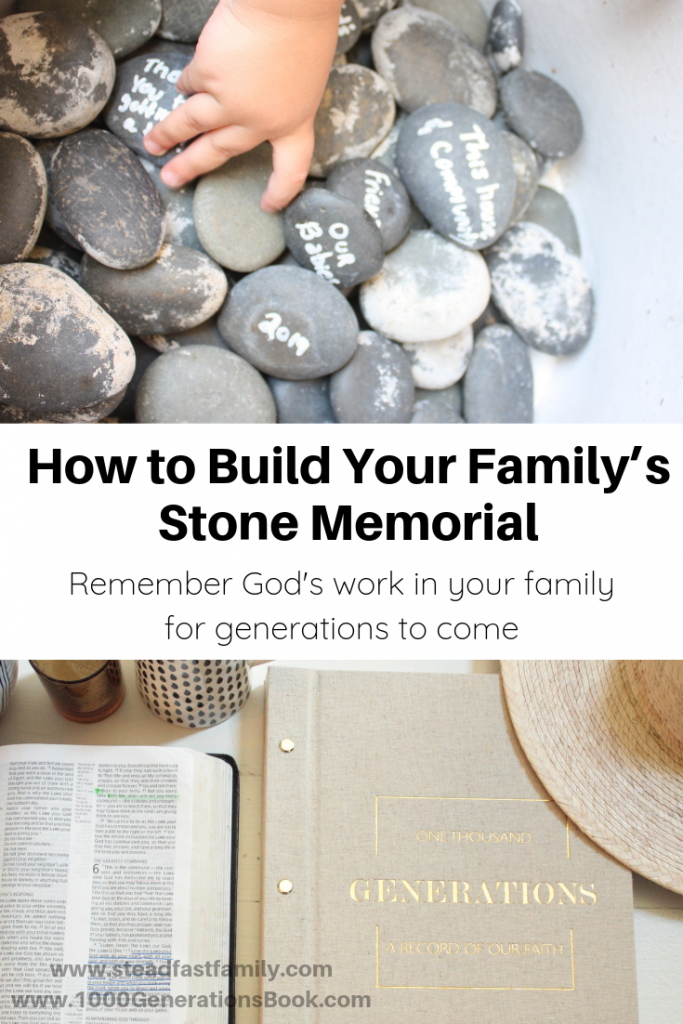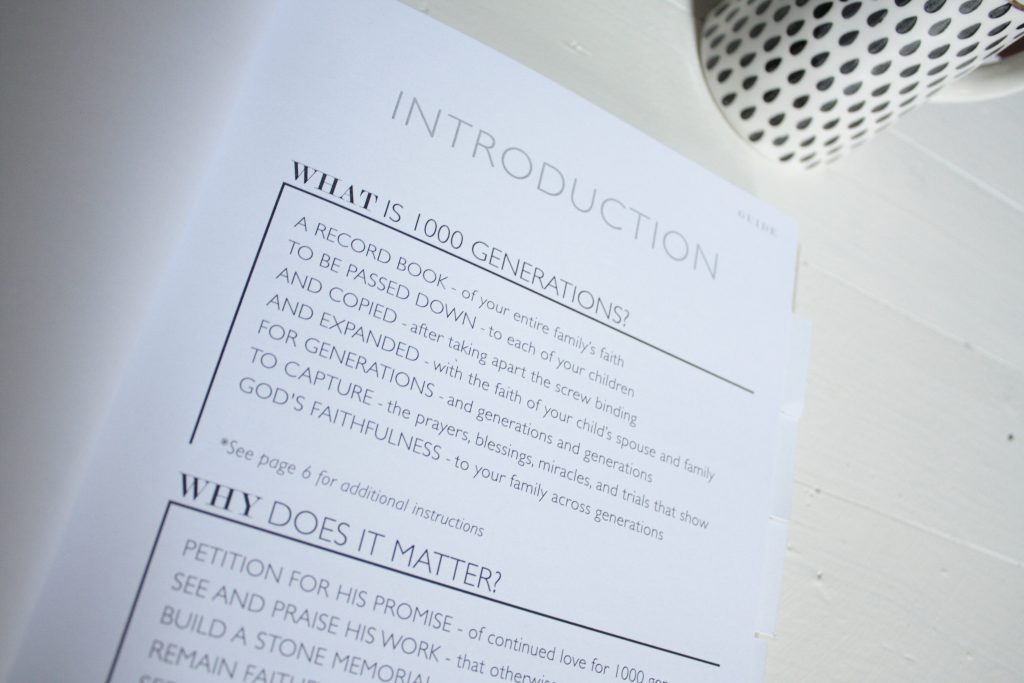How to Build Your Family’s Stone Memorial

I recently heard someone say as reason for their unbelief, “I believe we shouldn’t rely on something we can’t see, hear, or feel to make things better.”
That thought is so common, so wrong, and yet also understandable. It really struck a chord with me because while I’ve been on this path of seeing and documenting God’s presence in our lives for a while now (more on that later), I realized I needed to make sure my children were learning to see, hear, and feel God’s presence too.
Teaching our children about God is more than just teaching them what He did in the Bible and what Jesus’s sacrifice means for us, it’s also helping them learn that God is just as real and present today as He was in Bible times. To that aim, we’ve started building a family stone memorial (both adult and kid versions) to focus on God’s work in our lives.
A stone memorial, if you’re wondering, is not a grave stone. It’s actually a reference to the story of the Israelite’s crossing the Jordan River into the Promised Land. Joshua chapters 3 and 4 recounts how the Lord stopped the waters of the Jordan river so that the Israelites could cross the river on foot. He then instructed them to send twelve men into the riverbed to collect twelve stones. They were to make a stone memorial to help them and their children remember the Lord’s work that day.
“Go across to the ark of the Lord your God in the middle of the Jordan. Each of you lift a stone onto his shoulder, one for each of the Israelite tribes, so that this will be a sign among you. In the future, when your children ask you, ‘What do these stones man to you?’ you should tell them, ‘The waters of the Jordan were cut off in front of the ark of the Lord’s covenant.” -Joshua 4:6-7

Building a stone memorial for your family is essentially just documenting God’s work and it can be accomplished both literally and symbolically. You can actually have a rock pile (we do!) but you can also use a family Bible or a record book. Here’s the pros and cons for each of these three methods.
- Family Bible: A shared family Bible, usually a note-taking edition, can be a great place to record prayers and ways the Lord has been present in your lives. One great thing about a family Bible is that it encourages you to seek out scripture relevant to what you are recording. However, though we do keep a family prayer journal and see it as a valuable tool in documenting God’s work, it has a significant drawback. It can’t effectively be passed down. When our children leave our house, the Bible will stay with me because I can’t effectively copy it. Thus, my boys will most likely lose sight of all the things we’ve recorded.
- Rock Memorial: To create a rock memorial you write down God’s work in your life on a rock. One instance per rock and slowly you build up a stone memorial. This idea stems from the Lord’s instructions to the Israelites in Joshua 4:6. This is GREAT for young kids as the rocks are so tangible but the downside is twofold; you can’t write much and it’s also going to be hard to pass down the rocks to multiple children.
We record both our adult experiences of God’s work and our children’s experiences. For instance, my 4-year-old prayed the other night that God would protect his stuffed piggy that he had left outside. Moments later my husband walked in to the room holding that very piggy (if I shared all the details you would see this was actually a fairly surprising series of events). We were able to explain that God had used my husband to answer Caleb’s prayer. Now we have a rock with a piggy drawn on it and 2019 on the back.

So that brings me to the third way that you can record your family’s faith and experience with the Lord and I am SO excited to share it with you. In an effort to more effectively document God’s presence in our lives, I’ve created a record book called 1000 Generations | A Record of Our Faith. You can read all about it and pre-order a copy at www.1000GenerationsBook.com but I’ll give you guys the cliff notes:
- 1000 Generations: 1000 Generations is a place to record God’s work in your personal life, your spouse’s life, your parent’s lives, grandparent’s lives, etc. It’s been specifically designed to help you determine what to write and how to write it. The journal is divided into five topical sections (salvation, prayer, blessings, trials, and miracles) each with an introduction, scripture, and prompt questions.
What truly makes the journal unique and practical is its special binding that allows it to come apart and be easily copied on a copy machine. This means that unlike the other examples, 1000 Generationsis something each of your children can easily take with them when they leave your house. Further, they can actually expand the journal with their own stories and their spouses.

When we intentionally spend time seeking out God’s hand in our lives and write down those moments so that we don’t forget them, we’ll begin to see how present He is, how faithfully He provides for us, how much we can trust Him, and how worthy of our love He truly is. We’ll know that our Lord can be seen, heard, and felt.
Whether it’s with an actual rock stack, your own copy of 1000 Generations, or even if you just start talking about God’s presence more, I pray you’ll be intentional so you’ll never have to hear your child tell you that God is invisible.

About the Author: Sara Haddox lives in Boerne, TX, is mom to Caleb (age 4) and David (age 2), and wife to Matthew. She’s a maker and a doer by nature, whether it’s building furniture, sewing kid costumes, cooking a new recipe, or writing and designing a book. She’s a Children’s Leader in Bible Study Fellowship and is active in her church and several Christian groups in her community. Sara’s goal is to say “yes” to the Lord even when the task seems impossible.
